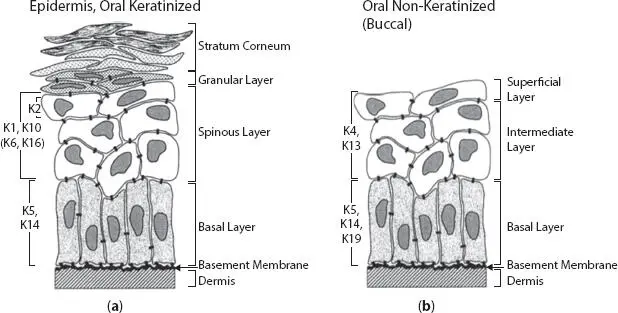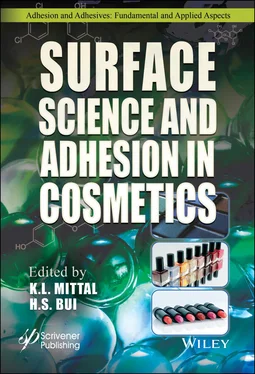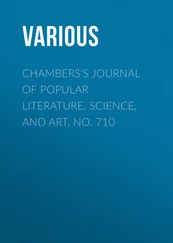1 ...7 8 9 11 12 13 ...33 A 2,023-subject study on the soft tissue 3D landmarks around the lips was conducted using a Three-Dimensional Facial Morphometry system and provided valuable insight into the development process of the lips [21]. This study investigated the differences in lip dimensions (linear distance and ratio as well as area and volume of vermilion) as a function of gender and aging. Their measurements, taken from subjects aging from 6-7 years old all the way through adulthood, illustrated that male subjects have on average higher lip volume, greater vermilion area, and greater lip heights thorough all ages [21]. Linear distance in girls has similar dimension as measured in adults, while in the boys in the 13-14 year old age group reported a period where a large year to year increase was observed [21].
The motions of the lips are controlled by the orbicularis oris muscle, which subdivides into pars marginalis and pars peripheralis [10, 11, 13, 16, 17] The pars marginalis consists of the muscle fiber group lodged within the vermilion zone of the lips, while the pars peripheralis is located in the cutaneous lip. When the mouth is closed, the orbicularis oris is tonically contracted; while in motions such as kissing and whistling, the orbicularis oris muscle undergoes active contraction. During chewing, four other muscle groups (masseter, temporalis, medial pterygoid and lateral pterygoid) are responsible for the adduction of the jaw. Many of the biophysical properties of the lips have been reported by Fogel and Stranc in a 500-subject study representing different genders and age groups [22]. In this study, the lips of the subjects were evaluated for intercommissural distance, perioral tissue strength & elasticity and lip sensitivity. Logically, the age and gender of the subjects have profound effects on the biophysical properties of lips. The soft tissue gape and oral aperture of the lips generally peak in the age group of 16-30 and have consistent reducing trends in older age groups [22]. In 2011, Sjogreen et al . used 3D imaging systems to capture the mobility of the lips for their subject at rest and during open mouth smile and lip puckering [23]. Not surprisingly, the lips are subjected to very large range of mechanical motions. During open mouth smile, the lips experience 34% extension over rest, while during lip puckering the lips experience 37% contraction over rest. Using a pommeter, Fogel and Stranc were able to measure the strength of the orbicularis oris muscle of the subjects and reported higher strength values in age groups ranging from 16-30 to 46-60, while subjects of advanced age (61-75) had much reduced value of muscle strength [22]. The mechanical properties of the lips were measured using a device called LASTIC (Light Aspiration device for in vivo Soft TIssue Characterization) which functioned very similarly to a cutometer [24]. In this study, Luboz et al . reported that the measured Young’s modulus of the lips ranged from 18 to 46 kPa [24]. The measured Young’s modulus values of the lips are on par with the measured value of skin from the cheek, cheekbone and forehead [24]. Such biophysical understanding of the lip motion can be very important information for designing lipstick products that have ideal comfort and durability.
1.2.2 Surface Properties of the Lips
In order to understand the surface properties of the lips, it is essential to understand the process of barrier assembly in the keratinized epithelium. This process is controlled by the differentiating epithelial cells in a tightly regulated manner in order to form a functional physical barrier and to maintain skin and lip epithelium [25, 26]. In the process of barrier formation, epidermal cells accumulate lamellar bodies containing keratins, ω-hydroxy-ceramides, free fatty acids, cholesterol, and other barrier lipids. At a late stage of differentiation, these organized extracellular lipids assemble into orderly lamellae forming what is defined as cornified cell envelope. Cornified envelope consists mostly of loricin (85%), small proline rich (SPR) protein, involucrin, keratins, desmoplakin, and filaggrin [25]. Keratins are crosslinked to cornified envelope at the final stage in the lipid lamellae, which has the vital mechanical and water permeability barrier functions for skin homeostasis. Since keratins are the main cytoskeletal component of keratinized epithelium, the differences in the types of keratins found in the keratinized vs. non-keratinized epithelium also suggest significant functional differences ( Figure 1.4). In the keratinized epithelium layers, keratins K5 and K14 are expressed in the basal layer, while K19 is expressed in the non-keratinized epithelium [27]. In the differentiating suprabasal layers, the keratinized epithelium expresses keratins K1 and K10, while K4 and K13 are expressed mostly in non-keratinized epithelium. In K1 and K10 deficient mice, the missing keratins in the cornified envelope maturation process induced significant inflammation, hyperkeratosis, and skin fragility, thus suggesting the functional need for these keratins in skin homeostasis [28, 29].
Using a double immunostaining technique with Nile Red and anti-Involucrin, Hirao and coworkers were able to shed light into the maturation level of cornified envelopes at various locations on the body, including the lips [30, 31]. This method utilized stratum corneum obtained by tape stripping, followed by double labeling with Nile Red and anti-Involucrin. The immature cornified envelope was double labeled with the hydrophobic Nile Red dye and anti-Involucrin, while the mature cornified envelope was labeled with Nile Red only. In this work, the maturation process of cornified envelope was illustrated by sequential tape stripping, where they illustrated both the presence of immature cornified envelope on the 25th tape strip and the transition towards more mature cornified envelope in the first tape strip [30]. They went on studying different locations of the body to demonstrate potential regional differences in the cornified envelopes. Immature cornified envelopes were discovered at the forehead and lips, but not in the trunk and extremities [30]. Hirao et al . hypothesized that the cornified envelope maturity is correlated with the barrier function, where locations (such as lips) with more immature cornified envelope also have higher trans-epidermal water loss [30].

Figure 1.4 Keratin assembly in the different layers of keratinized vs. non-keratinized oral epidermis [27].
The difference in functional properties between the lips and the cheeks was illustrated by Kobayashi and Tagami where they measured transepidermal water loss (TEWL), conductance, size of corneocytes, blood flow and surface skin temperature in over three hundred volunteers [32]. They reported significantly higher TEWL (33 vs. 11 g/m 2/h), lower conductance (61 vs. 163 µS), larger and more parakeratotic corneocytes (824 vs. 776 µm 2), higher blood flow (16 vs. 7 mL/min*g) and higher surface temperature (33 vs. 31 °C) on lips vs. on cheeks. The reported values not only verified the relationship of the poor barrier function of the lips with the physiological makeup of the lip tissue, but it also illustrated the need for lip moisturizing products, especially in dry and cold environments.
The ceramide profile can be used to shed light on the relationship of barrier function and surface properties for both the skin and lips. Ceramides, which consist of 30-40% of stratum corneum lipids by weight, have an integral role in barrier homeostasis [33, 34]. To date, there are over 300 ceramide species that have been identified on the human stratum corneum, and they can be loosely classified into 12 groups based on their hydroxylation patterns in the sphingoid bases and fatty acid moieties [34–37]. There are 4 main classes of sphingoid bases: Dihydrosphingosine (dS), sphingosine (S), 6-hydroxy sphingosine (H) and phytosphingosine (P) [33, 34]. In terms of the fatty acid moieties, there are 3 general classes: non-hydroxy fatty acid (N), α-hydroxy fatty acid (A) and esterified ω-hydroxy fatty acid (EO) [33]. These fatty acid moieties and sphingoid bases combine to make up the different ceramide classifications such as CER [NP], CER [EOS] and CER [NS]. The different ceramides containing different sphingoid bases and fatty acid moieties are generalized in Table 1.1.
Читать дальше













